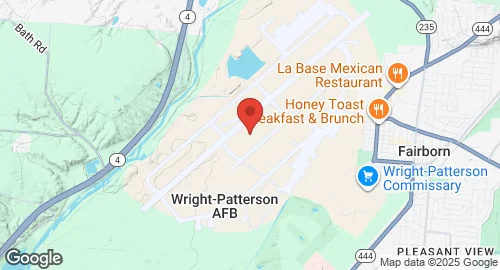Wright-Patterson Air Force Base
Summary
| Operating Country | 🇺🇸 United States |
| Location | 🇺🇸 United States |
| Status | ◉ Active |
| Usage | Military only |
| Year built | 1917 |
| Operating Organization | US Air Force |
| Units |
|
Description
Wright-Patterson Air Force Base (WPAFB) is a United States Air Force installation located near Dayton, Ohio. Its origins trace back to May 22, 1917, with the establishment of Wilbur Wright Field and McCook Field during World War I. McCook Field served as a testing ground, while Wright Field, renamed Patterson Field in 1931, functioned as a flying field and supply depot. The current base was officially established in 1948 through the merger of Patterson and Wright Fields.
WPAFB is operated by the U.S. Air Force under the Air Force Materiel Command (AFMC). The host unit is the 88th Air Base Wing (88 ABW), which manages the airfield, infrastructure, and support services for over 60 associate units. Other significant units stationed at the base include the National Air and Space Intelligence Center (NASIC) and the Space Force's National Space Intelligence Center (NSIC), which are primary organizations for strategic air and space threat analysis. The 445th Airlift Wing of the Air Force Reserve Command also operates C-17 Globemaster III transports from WPAFB.
The base features two runways: 5L/23R, measuring 3,840.4 meters with a Porous European Mix surface, and 5R/23L, 2,133.6 meters with an Asphalt surface. WPAFB has a history of flight testing, dating back to the Wright brothers' experimental flights at Huffman Prairie, now part of the base. In 1995, the base hosted the negotiations that led to the Dayton Agreement, which ended the Bosnian War. The National Museum of the United States Air Force, the oldest and largest military aircraft museum globally, is located adjacent to the base.
